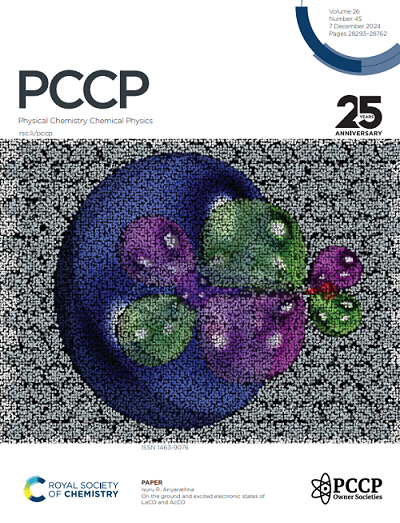Phonon-mediated superconductivity in the metal diborides XB2 under pressure
IF 2.9
3区 化学
Q3 CHEMISTRY, PHYSICAL
引用次数: 0
Abstract
As a promising candidate for high-temperature superconductors, the AlB2 structure has garnered significant attention. Notably, the discovery of MgB2, which is stable at zero pressure and exhibits a high Tc of 39 K, has sparked a surge in research on metal borides. Metals, acting as electron donors, play a crucial role in stabilizing the relative positions of metal and boron atoms, thereby contributing to the stabilization of the crystal structure and the enhancement of superconductivity. In this study, the Mg atom was replaced with another metal atom X (X = Li, Ca, Sc, Ti, V, Rb, Zr, Nb, Cs, Ba, Hf, Ta). The resulting 12 compounds demonstrated stability at zero or low pressure. However, none of these compounds exhibited superconductivity comparable to that of the parent MgB2. Among them, LiB2, CsB2, and RbB2 emerged as the most promising candidates for superconductors. These findings highlight the complex interplay between the density of electronic states at the Fermi level and electron–phonon coupling in determining the superconductivity of binary metal borides. The computational results provide valuable insights for future research and the design of new superconducting materials within this family of metal compounds.

求助全文
约1分钟内获得全文
求助全文
来源期刊

Physical Chemistry Chemical Physics
化学-物理:原子、分子和化学物理
CiteScore
5.50
自引率
9.10%
发文量
2675
审稿时长
2.0 months
期刊介绍:
Physical Chemistry Chemical Physics (PCCP) is an international journal co-owned by 19 physical chemistry and physics societies from around the world. This journal publishes original, cutting-edge research in physical chemistry, chemical physics and biophysical chemistry. To be suitable for publication in PCCP, articles must include significant innovation and/or insight into physical chemistry; this is the most important criterion that reviewers and Editors will judge against when evaluating submissions.
The journal has a broad scope and welcomes contributions spanning experiment, theory, computation and data science. Topical coverage includes spectroscopy, dynamics, kinetics, statistical mechanics, thermodynamics, electrochemistry, catalysis, surface science, quantum mechanics, quantum computing and machine learning. Interdisciplinary research areas such as polymers and soft matter, materials, nanoscience, energy, surfaces/interfaces, and biophysical chemistry are welcomed if they demonstrate significant innovation and/or insight into physical chemistry. Joined experimental/theoretical studies are particularly appreciated when complementary and based on up-to-date approaches.
 求助内容:
求助内容: 应助结果提醒方式:
应助结果提醒方式:


